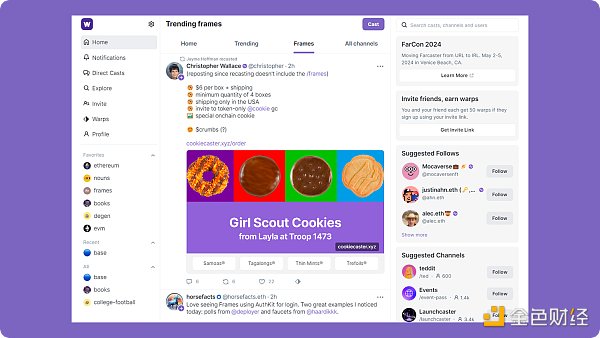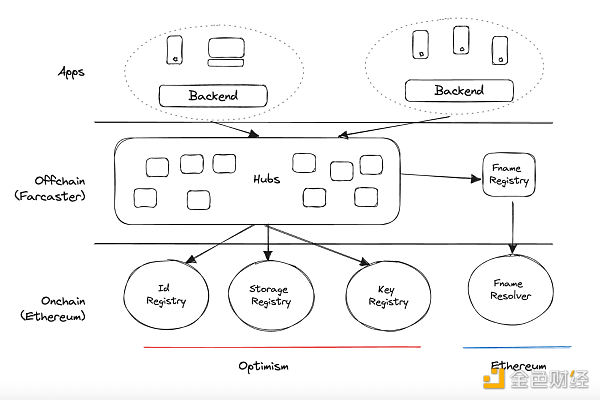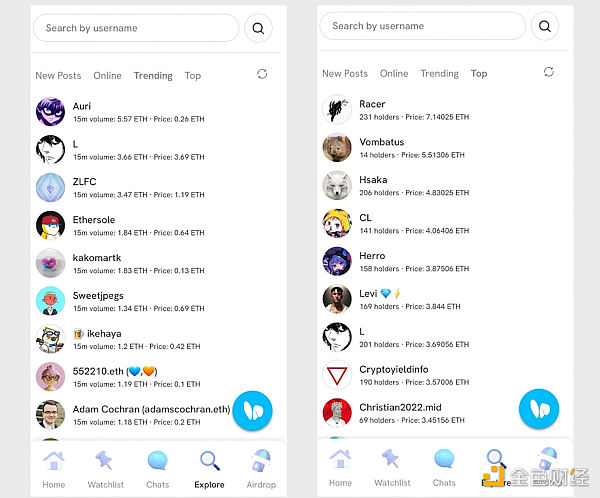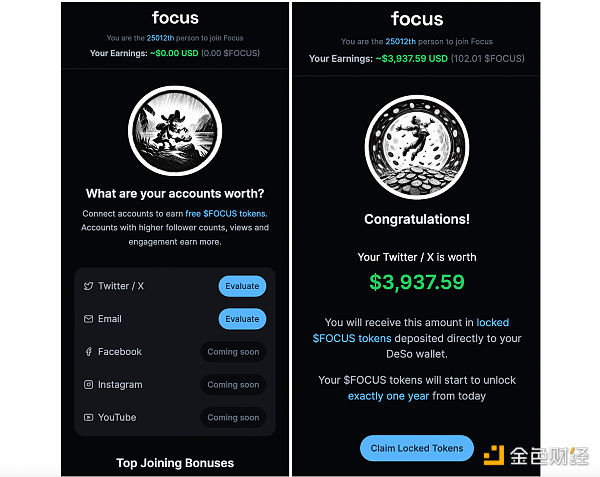Author: Paul Veradittakit, Pantera Capital Translation: Shan Oppa, Golden Finance
Pantera Capital is excited about new ways web3 can unlock social platforms that enable users to connect and interact with creators, influencers and fellow users. Decentralized social protocol Farcaster has seen a surge in popularity last month following the launch of its Frames feature, which allows developers to create interactive, embeddable posts for their audiences. Soon, users will be able to mint NFTs, complete surveys, play Doom and even earn rewards by purchasing Girl Scout Cookies directly through Farcaster’s flagship client, Warpcast.

Previously, this kind of seamless in-app experience was not possible through traditional web2 social media platforms. Identity, ownership, tokens and payment channels – these are all features of blockchain that make it possible to create entirely new social features like Frames. In this article, we’ll focus on different social protocols and platforms and explore how they leverage web3’s building blocks to create new experiences.
Farcaster and Lens
In web2, data is divided into islands, consisting of Controlled by the platform itself. This means developers cannot create alternative platforms to present content in novel ways. X (formerly Twitter) limits users to its platform and does not offer any flexibility in the interface using different algorithms. Additionally, users do not own their accounts - if they are banned, they lose their reach and ability to post.
Farcaster and Lens are two popular social protocols that take a unique approach: opening up data access and letting users control their accounts. Farcaster stores its post data on a decentralized storage network called Hubs, so it is accessible to everyone. Additionally, Farcaster profiles are linked to users’ Ethereum accounts on the Optimism platform, ensuring users truly own their digital identity.

Lens is an on-chain social graph and developer tool that enables users to own their content. Interactions on Lens can be published to the chain or to Momoka, a data availability and verification layer. Creating a profile on Lens grants the user a unique, sequentially numbered NFT. This NFT is the protocol access point for users to perform actions such as following, posting, and commenting. Since users own their NFT, they own their profile.
Developers are leveraging these open protocols to build a variety of engaging clients and features. Users publish content at the protocol level and the same content can be accessed through one of many clients. Warpcast is Farcaster's flagship social media client and offers an X-like user experience, while Phaver and Orb offer popular experiences on Lens, and there are many others. For example, Supercast is a client for more serious and active Farcaster users; Sealcaster allows you to publish Farcaster posts anonymously using zero-knowledge proofs; and Tape is a client for media sharing on Lens.
The innovation spurred by these open protocols is not limited to client applications. What sets protocols like Farcaster and Lens apart from web2 is their capabilities of on-chain identity, payments, tokenization, and composability, which combine to enable novel innovations. On Farcaster, for example, new experiments are emerging like DEGEN – a tradable token that allows users to tip others by commenting on posts. Additionally, tools and services are expanding significantly. Bountycaster is compatible with any Farcaster client, allowing users to create and complete tasks to earn USDC rewards. Lens’ Open Operations feature allows for custom on-chain operations to be embedded in posts, enabling new functionality in social feeds such as payments (collecting fees, tips), NFT minting, token issuance, and more. Whether it’s tokenized games embedded directly within apps, prediction markets that score points by updating users’ on-chain social reputation, or tools that make aggregating Farcaster and Lens data easier, there are countless experiments, applications, and foundations out there. Facilities and tools are waiting to be created.
Friend.Tech
Last September, the web3 social application Friend.Tech became popular Crypto community. In just a few months, more than 100,000 accounts were created on the platform. The app introduces a novel feature that allows users to purchase an influencer's "key," unlocking exclusive perks such as direct message access and entry to closed chat rooms. Influencers including gaming influencer FaZe Banks and NBA star Grayson Allen have joined the platform to share their thoughts on gaming, crypto, and sports with keyholders.
What makes the app so exciting for key holders is the ability to trade keys, making them a form of investment in future influencer demand. Through friend.tech, users participate in buying and selling keys, with a portion of the proceeds going to influencers and the platform itself. Many top crypto influencers start earning hundreds of thousands of dollars through royalties sharing alpha information and ideas about the crypto market. In just 2 months, friend.tech generated nearly $20 million in fees.

Platform activity has dropped significantly since its peak, with transaction volume down more than 99% from its peak, mainly due to retention issues. However, friend.tech has shown some powerful features in web3 social platform promotion:
Progressive Web Apps (PWA): A key factor in friend.tech's rapid growth to over 100,000 users has been its Progressive Web Apps. This technology allows users to eliminate the need for complex wallet setup and instead use familiar login methods such as Google, Apple, or SMS verification. This greatly simplifies the onboarding process for the average user, making it more accessible.
Leverage Web2 Audience: friend.tech reaches users by leveraging the existing Web2 user base. By allowing users to connect through their X (formerly Twitter) accounts, friend.tech continues to spark discussion about its platform on X, thereby attracting more X users to sign up.
Tradable social assets: friend.tech introduces a dynamic social asset market where users can trade crypto on its Layer 2 Base key transactions because the transaction fees at this layer are lower. As we saw with the success of BitClout in 2021, combining financialization and speculation with social applications has the potential to create viral effects.
Focus
DeSo is a PanteraCapital portfolio company. The company recently announced plans to launch its flagship app Focus, built on the DeSo blockchain, in June this year. Focus allows users to pay for content using cryptocurrencies, while supporting features such as crypto-native subscriptions, paid messaging, and paid forwarding. Focus also integrates novel speculative primitives, such as the tokenization of creator income through a new product called Creator Coin.
Solving the cold-start problem (i.e., attracting enough users to make a social network valuable) is a major challenge in developing social platforms. Protocols like Farcaster and Lens engage users by delivering innovative experiences that engage users in unique and interactive ways. Friend.tech strategically targets opinion leaders in the cryptocurrency space, leveraging their following to bring a crypto-savvy user base to its platform.
Focus is trying to solve the cold start problem by using web3 incentives. Users with large followings on networks such as X, Instagram, TikTok or Twitch will be incentivized to sign up and engage with the platform as they will be rewarded with FOCUS tokens proportionally to their measurable influence. The team calls this novel mechanism "Social Airdrop."

Improving user retention is another essential factor for the success of social networks: users need to continue to stay on the platform and interact. The DeSo team solved this problem by creating a “publish and earn” mechanism: Focus will issue token rewards every week to top creators and users who actively interact with content. Because user accounts are linked to their on-chain wallet addresses, Focus can differentiate between real users and wash bots by looking at user activity and wallet balances.
Even without incentives, why would creators continue to use Focus instead of other platforms?
Focus blockchain technology brings innovative profit methods to creators:
First of all, Focus supports users to use cryptocurrency for subscriptions, paid messages, and "paid forwarding" operations. The "paid forwarding" function is essentially equivalent to the "paid forwarding" function on the platform. Decentralized advertising model.
Secondly, since all content data is stored on the DeSo chain, users can use Focus’s generative AI tools to create new content. Such as mashing up images previously posted by the creator. Creators can set a fee for each time a user queries their work.
Finally, through the "Tokenized Creator Income" function, emerging creators can issue and sell "Creator Coins", The token allows them to earn a percentage of content revenue. This enables early backers to invest in creators and share in the benefits of their success.
Summary
Nowadays, with Layer 1 and With the emergence of Layer 2 technology, social platforms can operate without high cost burdens and can handle data storage problems in novel ways. Because of this, we are witnessing the emergence of various social platforms in the web3 space. We've seen different ways social platforms are leveraging blockchain, and here are some of the important ones:
Using open protocols to attract developers to create novel use cases is very effective. Farcaster and Lens are not the next Facebook; rather, they are foundational protocols capable of supporting clients and applications that will be joined by tens of millions of users in the future. Together, these networks will grow as more data is generated and flows freely between platforms.
We've also seen that speculative elements like friend.tech's keys can be combined to create viral effects. With the advent of support for Progressive Web Apps (PWAs) and Layer 2 solutions, along with the implementation of low transaction fees, it will become easier to introduce users to killer web3 social apps. Soon it will be a reality for users to conduct transactions as seamlessly as they would in a video game.
Cryptocurrency provides new ways for creators to make money. Whether it’s Focus’ paid retweeting and paid private messaging features, or friend.tech’s key royalties, cryptocurrencies remove any payment friction, allowing creators to move beyond the simple pursuit of getting the most views. Therefore, they can choose the method that suits them best to earn money.
Using cryptocurrency incentives to solve the cold start problem of the network has huge potential in the future. In the past, Blur eventually surpassed OpenSea in trading volume by launching an airdrop season event. Traders with the highest trading volume will be rewarded with more BLUR tokens. With Focus targeting web2 platforms using cryptocurrency incentives, we can expect success for those platforms that leverage this strategy to attract the most influential creators on platforms like X, YouTube, and Instagram.
In the coming years, not only connect users, but also leverage open data, tokenization, ownership and identity Social apps and networks that are the fundamental building blocks of cryptocurrencies will attract more users into the crypto space. Pantera Capital looks forward to accelerating the future development of web3 social.
 JinseFinance
JinseFinance
 JinseFinance
JinseFinance JinseFinance
JinseFinance JinseFinance
JinseFinance JinseFinance
JinseFinance JinseFinance
JinseFinance Edmund
Edmund JinseFinance
JinseFinance JinseFinance
JinseFinance decrypt
decrypt Financial Times
Financial Times